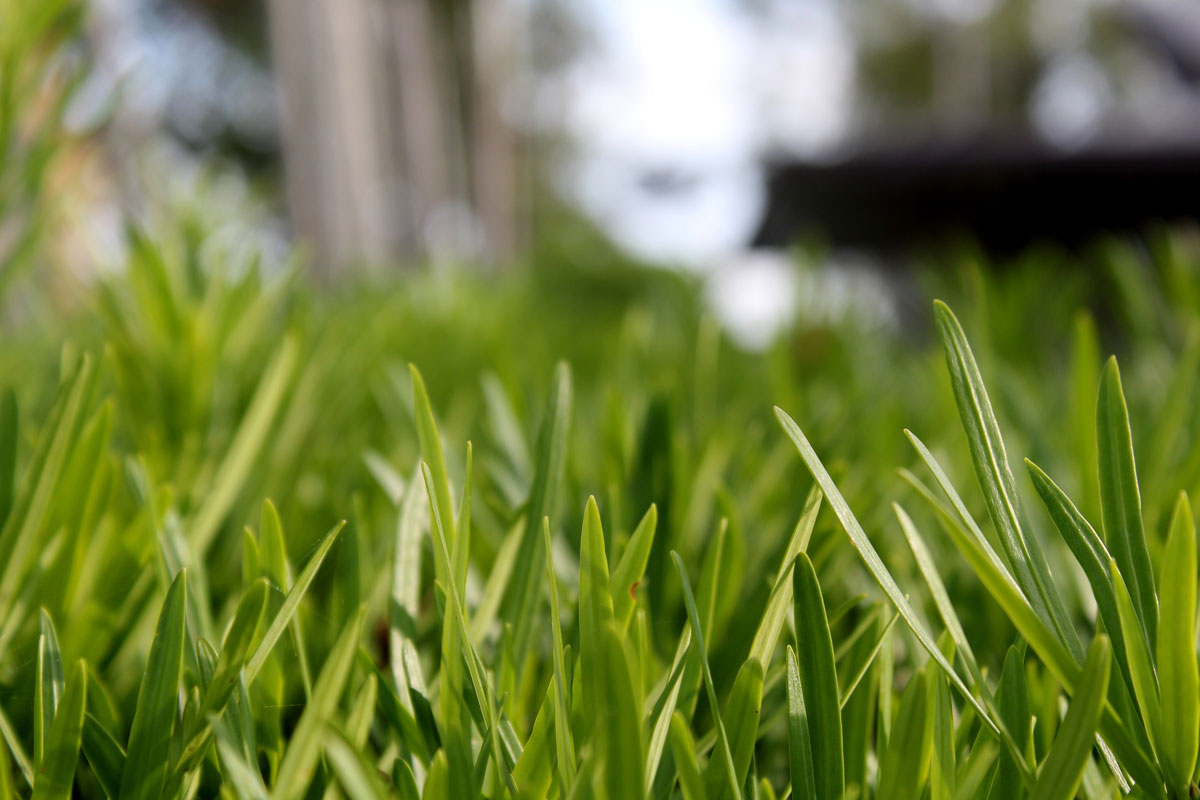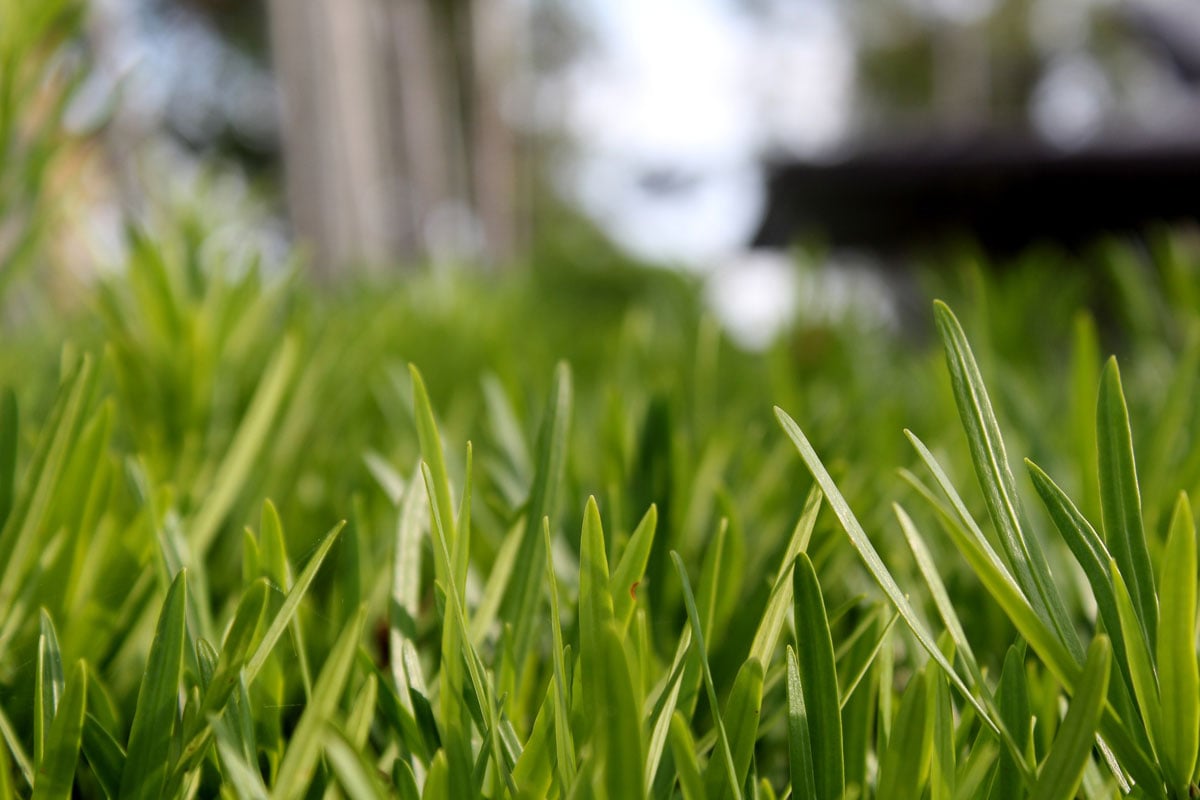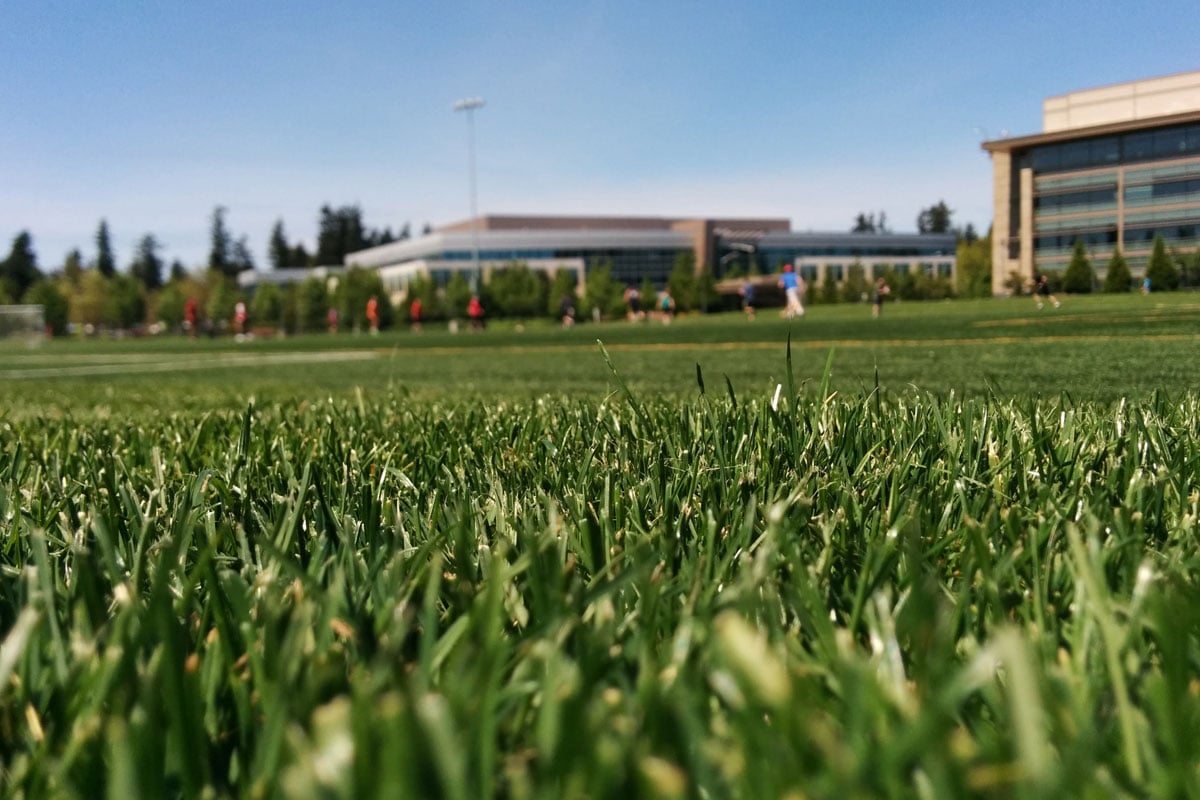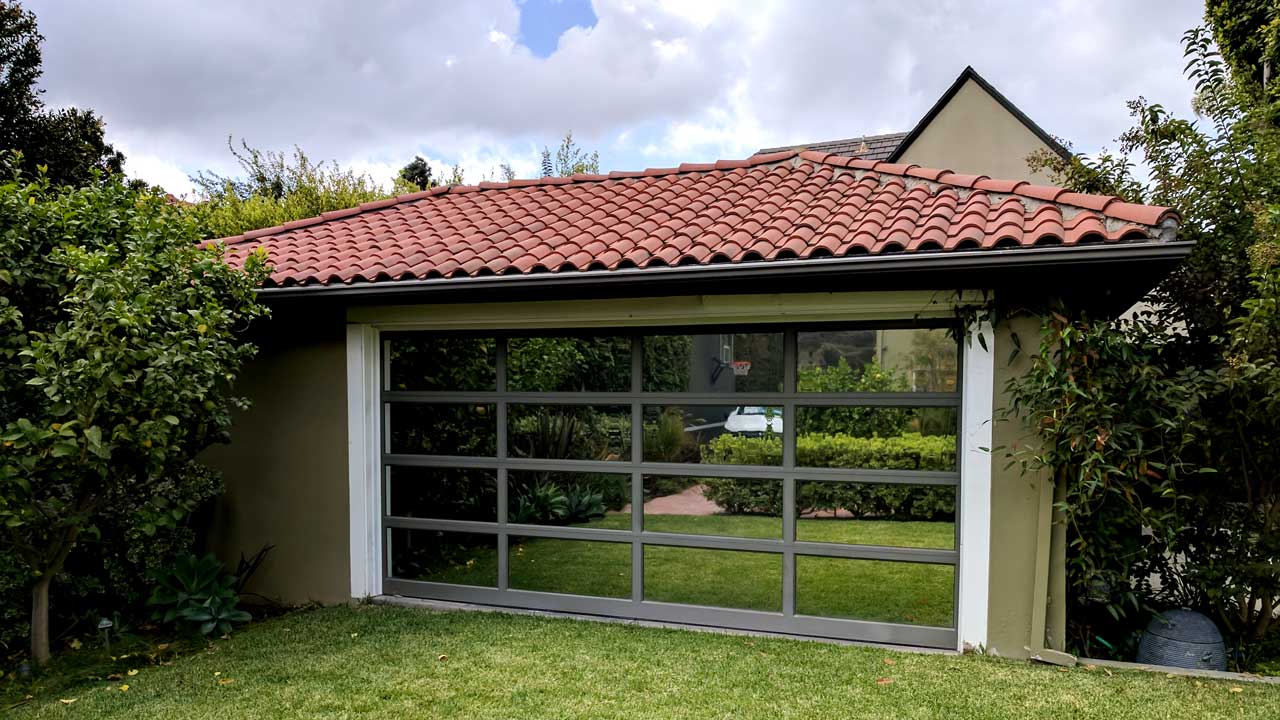

Thanks to water-saving efforts and busier schedules, more homeowners and commercial property owners are replacing natural grass with artificial turf. Artificial turf looks like a lush, green lawn all year round, while also being low-maintenance and giving a house or office a uniform look. The convenience of artificial turf also raises your property values. That artificial turf grass seems to be a total win-win, but it also burns on hot, summer days.
If you’re worried about your artificial turf burning and want to know how to prevent it, you’re in luck. We’ll explore why artificial turf burns and how you can prevent artificial grass burning by making your windows less reflective. Artificial turf is an investment, and Solar Art provides solutions for artificial turf burning to our customers all the time, so let’s dive in!
Let’s start by looking at the differences between natural grass and artificial grass, and the reason why natural grass doesn’t burn while artificial turf does. Natural grass cools the air around it, “offsetting solar heat by up to 50%” through absorbing some sunlight through photosynthesis and also by releasing water into the air.
Artificial turf, on the other hand, can’t photosynthesize or release water into the air, making it really hot. Additionally, reflections from glass windows can make turf even hotter--like shining the sun through a magnifying glass on it. How hot does artificial turf grass get you might? Pretty hot, in the range or 160-180°F! This heat builds up throughout the day and since artificial turf is made of synthetic plastic, it melts when the temperature gets too high.
If your turf is already burning, what does that means to you as the property owner? When the turf grass yarns (the name for individual turf grass blades), they lose their beautiful grass shape to melt into lumpy and sharp pieces. Burned turf is ugly, potentially dangerous if walked on, and ruins the uniform lawn look that you want from your investment. While you don’t need to replace the entire lawn (which would be expensive), you can cut out the burned parts and patch them with new grass pieces. This new grass will look different for a bit but if that doesn’t bother you, go for it. Time and use will blend it into your existing grass.
However, you probably don’t want to continuously cut out your lawn’s burnt pieces. It’s a short-term solution to a long-term problem. Next we will look at the how and why of reflection burn.

Like a mirror, shiny surfaces reflect most of the light that hits them--think of a bright glare off a car window. When sunlight hits a reflective surface, that light bounces back with the same strength, and sometimes that light hits the ground where your turf is. The sun moves through the day so turf burning is not usually focused on one spot. Your turf might be burned in several places that trace the path of the reflections moving through the day. Harsh sunlight reflections take only a few minutes to melt your turf.
So, what steps can you take to prevent that? The most practical, cost-effective, and immediate step to take is to look at the materials in your yard or around your business. Anything shiny and reflective like windows, metal BBQ grills, shiny toys, reflective sheds, car sides and more can burn your turf. If you can, cover the reflective surface or just move it out of the sun.
While this might work for toys and grills, windows are a different problem that require a different solution. You can’t remove your windows or cover them with sheets, so what do you do? Thankfully, there is a window film that reduces the risk of turf burn and is the ideal solution for windows that face your turf lawn. Let’s learn more about it!
While many films for different purposes are on the market, there is a window film that happens to prevent artificial turf from burning. It's called Hanita Optilite 75 Xtra window film.

OptiLite 75 Xtra window film by Hanita Tek is an exterior window film specially designed to reduce how much light is reflected off glass. The 75 in its name comes from how much light passes through your windows--in this case, approximately 75% of sunlight will pass through, as its tint is barely noticeable. But like other solar window films, it also blocks 99% of the sun’s dangerous UV light and reduces glare as well by 21%. Installing OptiLite Xtra 75 gives you “high energy savings” by blocking that nasty heat.
OptiLite 75 works by diminishing how much light is reflected from the outside--less than other solar window films--while still blocking a high amount of heat from getting through your windows and not tinting them too darkly. It’s a good compromise between heat blocking and reducing outside reflection.
In addition to the turf burning benefits, OptiLite 75 Xtra won't change the aesthetics of your space. It’s also smooth like standard solar film, so there’s no need to deal with perforated, noticeable window surfaces to save your turf lawn.
OptiLite 75 Xtra makes your windows artificial turf-friendly. OptiLite 75 Xtra preserves your artificial turf lawn by reducing how much light is reflected onto the ground, all day, every day. This long-term solution means the days of cutting out burned patches are at an end.
Your artificial turf is an investment that makes your home or office beautiful when properly cared for, but your reflective windows pose serious risks to your lawn’s longevity. That risk of damage is reduced with cutting-edge window film like OptiLite 75 Xtra. Saving your lawn from turf burn is just a call away -- talk to Solar Art today about how we can help!
These Stories on Commercial News
Solar Art is excited to announce another acquisition with New York Window Film!
Read this postSolar Art is excited to announce another acquisition with American Window Film!
Read this postIn the market for increased energy efficiency? Check out our blog to learn all about energy efficient window film for your home or business!
Read this postCorporate Location: 23042 Mill Creek Drive, Laguna Hills, CA 92653
Copyright 2024 - Solar Art | All Rights Reserved | Contractor's License #1054307
Comments (2)